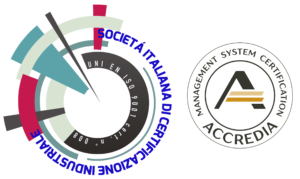If you want to calculate an extension spring, you will first need to know the working environment, factors such as temperature, exposure to corrosive agents, the number of cycles expected and the frequency, which determine the choice of the correct material.
Let’s see why:
TEMPERATURE
Depending on the temperature to which they are subjected, the materials work differently. For example, EN 10270-1 wire is suitable for a working temperature between -20 and +80° C, AISI 302 stainless steel has a range between -200 and +250° C, for higher temperatures needed nickel superalloys such as Inconel or Nimonic.
EXPOSURE TO CORROSIVE AGENTS
In contact with corrosive agents such as sea water, acids or methane, the surface protections of the spring will no longer be sufficient: a material capable of resisting the corrosiveness of the environment will be needed.
NUMBER OF EXPECTED CYCLES AND FREQUENCY
We need to know if a spring has to withstand millions of work cycles, because it could have low fatigue effetiveness, even if it worked well in a static way. Also in this case there are materials more suitable than others for long durations (EN 10270-2)…
Frequency is also important: doing 10 cycles per minute is different from doing 10 per second or 10 per hour. To perform a resonance analysis, we need to know the frequency.
After choosing the most suitable material, you will have to consider the space available for the spring, especially the maximum diameter that the spring can have without undergoing interference of any kind.
WORKING POINTS AND STROKE OF THE EXTENSION SPRINGS
Don’t forget the work points: you must keep in mind what they are in order to understand the stroke that the spring must carry out.
The length L1 with the “unloaded” spring (that is, mounted and slightly pulled) and the force F1 which must be supplied to L1: the free spring, in fact, will be shorter than this measurement.
The length L2, spring at maximum load, and the force F2 which must be supplied to L2.
The spring will be calculated so that the maximum length that can be reached is greater than L2, in this way the spring will still be in the elastic range and there will be no yielding.
The stroke S of the spring will be given by L2-L1.
Alternatively, only L2, F2 and the desired spring costant can be indicated.
L2 must be the length of maximum extension that the spring can reach, even occasionally: leaving the elastic range even just once, the spring will no longer return to its free length and will be irreparably damaged.
THE AVAILABLE SPACE AND THE LOADS OF THE EXTENSION SPRINGS
Attention: it may not be possible to respect all the quotas provided, because often the loads requested are incompatible with the available spaces.
In this case it will be necessary to calculate the spring which, respecting the spaces, supplies the maximum load and the one which, respecting the required loads, will have the smallest size.
HOW TO CHOOSE EYELETS
For the choice of the eyelets, we advice you to be guided by economy and necessity: when possible you will opt for english or german eyelets, the cheapest to make in production. Otherwise, in particular situations, other solutions will be proposed.
Contact us for advice!


